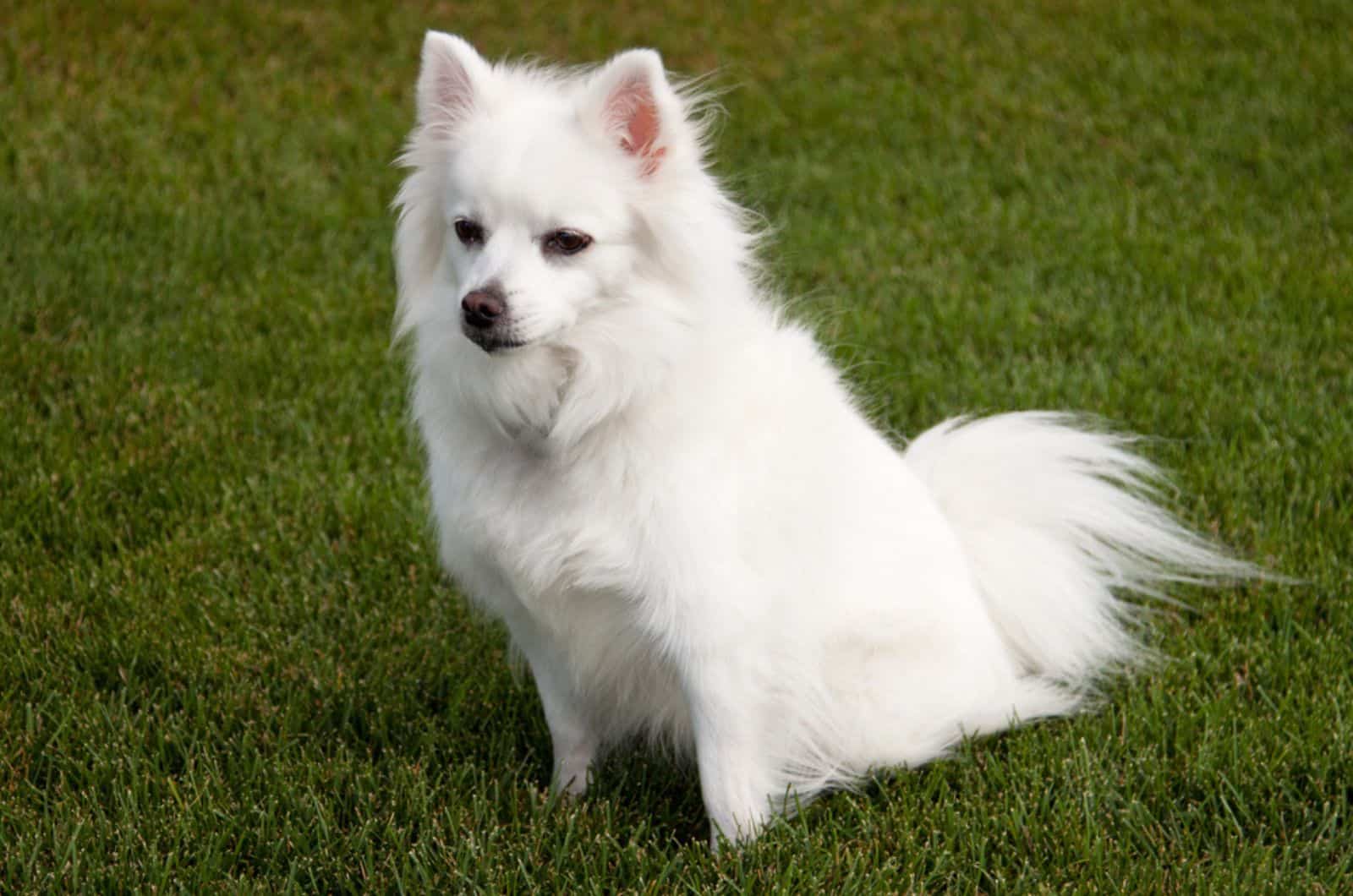Standard, mini, or toy, the American Eskimo retains all of its other physical features and temperament traits regardless of size. Depending on your preferred dog dimensions, you will find that each of these has a slightly higher family dog rating the smaller they get.
With the last sentence, you probably figured out that a toy American Eskimo is a prime choice for most homes. The abundance of designer breeds that double as lap dogs has kept the American Eskimo dog in the shadows for a while, but interest seems to have spiked.
In my opinion, the toy Eskie is ninety percent upsides and ten percent downsides (which is slightly subjective). By the time you read the article, you might find yourself thinking it is upsides through and through. Let me explain what the fuss is all about.
Toying Around With The Prospect Of An Eskie
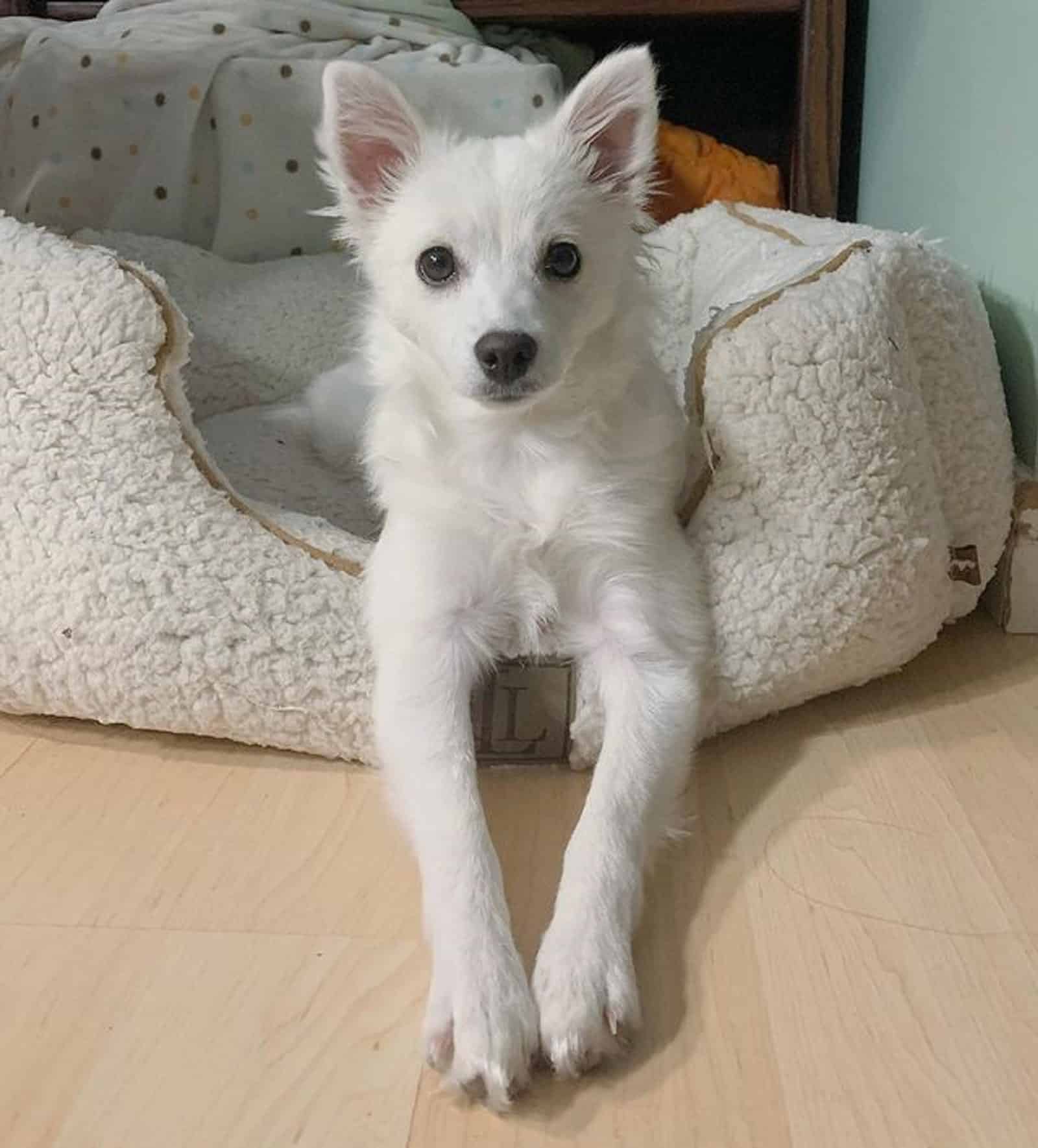
Relying upon your vision of the perfect dog, the toy American Eskimo might be a terrible or incredible choice. So, how will it appeal to you? First of all, they do not grow taller than nine or twelve inches.
Lying on your lap will not be a blood flow stopper, as the toy Eskie weighs only six to ten pounds. Pomeranians are arguably the most similar breed to this dog in terms of physical characteristics, so if you see one ask the owner to give you a short trial period.
Having said that, this Pomeranian growth chart might help you visualize how your toy Eskie’s journey from puppyhood to adulthood is going to look like. Here are some other things you need to know before considering getting one.
Shaped Like A Teddy Bear
Toy American Eskimo dogs have strong, athletic bodies underneath the lush coat. Being a small dog does not have to equal weakness, so the Toy Eskie will most definitely surprise you with its strength.
The head appears rather large due to the mane–like coat, but in essence, it is quite slim with a classic spitz muzzle that is shorter than the length of the skull. The eyes should be of a dark color and almond-shaped.
Another trademark of Nordic dogs, or dogs that are from the farther north areas (Samoyed comes to mind), is the softly contoured ears that seamlessly blend with the head thanks to the amount of fluffy outer coat.
Broad and deeply set, the chest balances the athletic and elegant silhouette. The neck mane is continued to the front side of the chest, with long hairs reaching down to the dog’s elbows.
Although you cannot clearly see it due to substantial feathering on the front and hind legs, the shoulders and hips of the toy Eskie are muscular and strong. The same goes for the medium-length neck that is elegant but covered with a dense layer of coat.
A straight backline ends with a tail that is either laid on the back or minimally lingers over it while the dog is at rest. When alert, the dog’s tail is held moderately high in a show of pride.
Coat Quality And Colors
The Eskie’s medium-length double coat consists of an undercoat and an outer coat. The former is very fluffy and dense and helps the body stay warm in harsh climates. The coat that the world sees and loves is a more rugged layer of hair, providing decent weatherproofing.
Due to the breed’s rather low popularity in the United States, there are not many color options available. This is probably for the best since breeding dogs with recessive genes, like the merle gene, can cause genetic mutations that cause sight and hearing problems.
A German spitz cousin, the already-mentioned Pomeranian, has a merle pattern variant that breeders often abuse, looking to increase their profits at the expense of health. Thankfully, American Eskimo puppies come in white or white and biscuit cream combinations only.
Grooming Needs
And groom you shall. The thick outer coat combined with the cotton-like undercoat will require daily grooming. If you have a large yard or take regular trips into nature, odds are your toy American Eskimo will easily get mud all over itself.
Using one of the 8 safe and effective shampoos we sourced for Pomeranian owners will make bathing a little bit easier, but there are more things to consider with this kind of ruff fur. Matting of the coat or patches of hair getting clumped together can be a proper pain in the donkey.
A good Siberian Husky brush will make sure the hair lies flat down, but the detangling will have to be done manually if you leave the dirt, soil, and water to dry on the outer coat. Patience is a virtue, and virtue is a skill you will learn as an owner of an Eskie.
The American Eskimo dog breed sheds moderately, so there will be plenty of hair to vacuum around the house, especially during season coat changes. Luckily, it is toy-sized, so the amount is lower than what you would get with a standard or miniature American Eskimo dog.
Keep Your Family Close And Their New Friends Closer
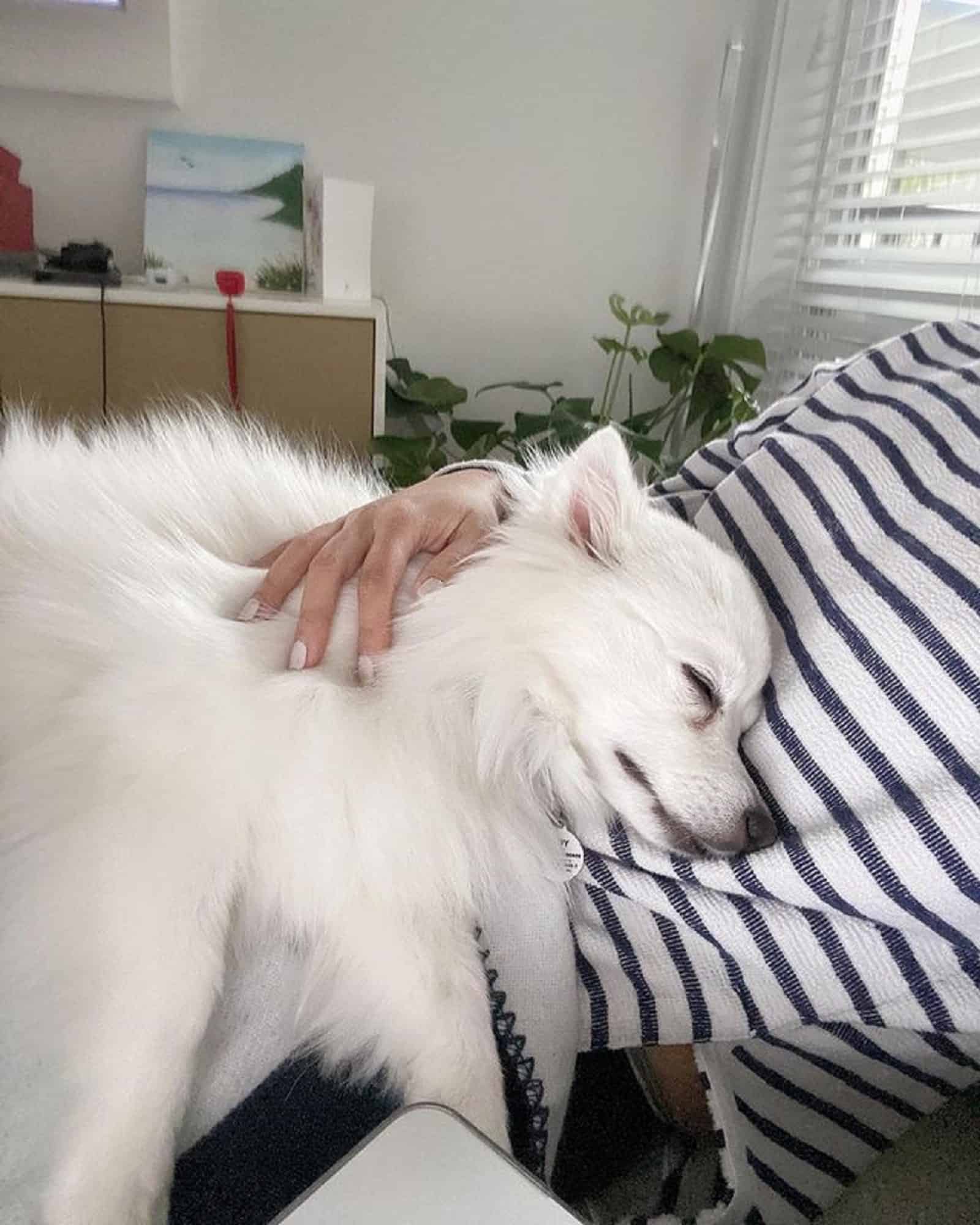
Affectionate beyond measure toward its family but not keen on expanding the friendship circle much further than that, the toy Eskie is not a guest-pleaser by any means.
As a loyal companion dog, it has high trainability potential, which can be seen in show rings across the States. Intelligent dogs like the toy American Eskimo are great at recognizing danger, so you get a decent watchdog in this breed.
Subject to interpretation, the Eskie is the all-around best dog for people who want a pet that does not require a lot of attention and stray away from large, individualistic canines. Eskie puppies will definitely require a lot of socialization if you have other dogs or pets in your home.
Young children should be taught to read the dog’s behavior to avoid getting a snappy response. After all, the toy Eskie is not a toy, but a seriously small and seriously work-oriented farm dog.
With that on the table, expect to take two or three walks per day to satisfy its physical activity needs. Despite their big playful demeanor with the family, they are not high-energy level dogs. Snoozing by your side is cherished as much as going wild in the open.
Unlike a Keeshond dog (a brother from another mother of the Spitz family), the Eskie will be a little more stubborn at times but feel less stressed when left alone for long periods of time. That is certainly not a bad trait in a dog with a busy family.
You will rejoice at the news that toy American Eskimo dogs do not bark a lot. Still, you can feel safe knowing their protective instincts are up to par with bigger dog breeds.
Health Problems In Toy American Eskimos
Small dog breeds are produced by selective breeding, and the process can sometimes cause some mutations that negatively impact health. Genetics is tricky business breeders are still attempting to master, but the smaller size of the toy version does not impact its lifespan.
Since the breed is not in high demand, or rather the demand is not as high as for some other small dogs like blue French Bulldogs, Pomeranians, and various Yorkshire Terrier mixes, the bloodlines have been kept healthy and conform to all breed standards.
Finding a reputable breeder should not be hard, as most of them are still expanding their pedigrees. Avoiding adverts for ridiculously low or high-priced toy Eski litters with little to no information should get you a very healthy canine companion.
Progressive Retinal Atrophy (PRA)
Although not a singular disease, this group of diseases affects the retina of a dog’s eye, with two types known to occur in toy American Eskimos — early onset and late onset PRA. Early onset goes by another name, retinal dysplasia, and is diagnosed in two or three-month-old pups.
Late-onset PRA is predominant in dogs aged between six and nine years of age. Both types carry progressively worsening eyesight with them and ultimately lead to blindness.
Symptoms are hard to spot, but over time, you might notice your dog being anxious during nighttime (loss of night vision) or more clumsy around objects in the house that were previously not problematic.
Without any cure or treatment, PRA is a serious set of diseases that will lead to complete loss of eyesight. The use of supplemental antioxidants may slow down the progression of the disease, but solid evidence of its effectiveness is yet to be presented.
Hip Dysplasia
Bone tissue in dogs matures during puppyhood. Joints are no exception, and because of their mobility, congenital diseases like hip dysplasia can cause a lot of problems in the future.
An undeveloped femoral head during the initial few months of the puppy’s life does not create a tight fit with the hip bone, putting more pressure on the cartilage that enables smooth and effortless movement of the joint.
Physical activity will cause the cartilage to wear off and eventually completely disappear. Without cushion between the two bones, permanent damage is done to the joint that will ultimately cause arthritis.
Symptoms include difficulty moving, pain while sitting or lying, abnormal gait, and whimpering while circling. Treatment usually involves the use of NSAIDs, but the only permanent solution is surgery.
Patellar Luxation
Anatomic abnormalities are among the most frequent problems in many dog breeds. A luxating patella means that the patellar ligament detaches from the adjacent bone and allows the patella or kneecap to dislocate.
Depending on the direction the dislocation occurs, there are two types of patellar luxation — medial and lateral. The more common one in dogs is medial patellar luxation (MPL). It is characterized as an inward dislocation of the patella.
This means your dog’s kneecap will move toward the other leg and will cause some noticeable symptoms, like sporadic limping, bowed legs, crackling of the joint, and an unnatural back position.
Similar to hip dysplasia, the pain and inflammation can be managed with NSAIDs, but surgery is the go-to option most vets decide on. Restraining physical activity is necessary before and after the surgical procedure.
Lifespan And Food
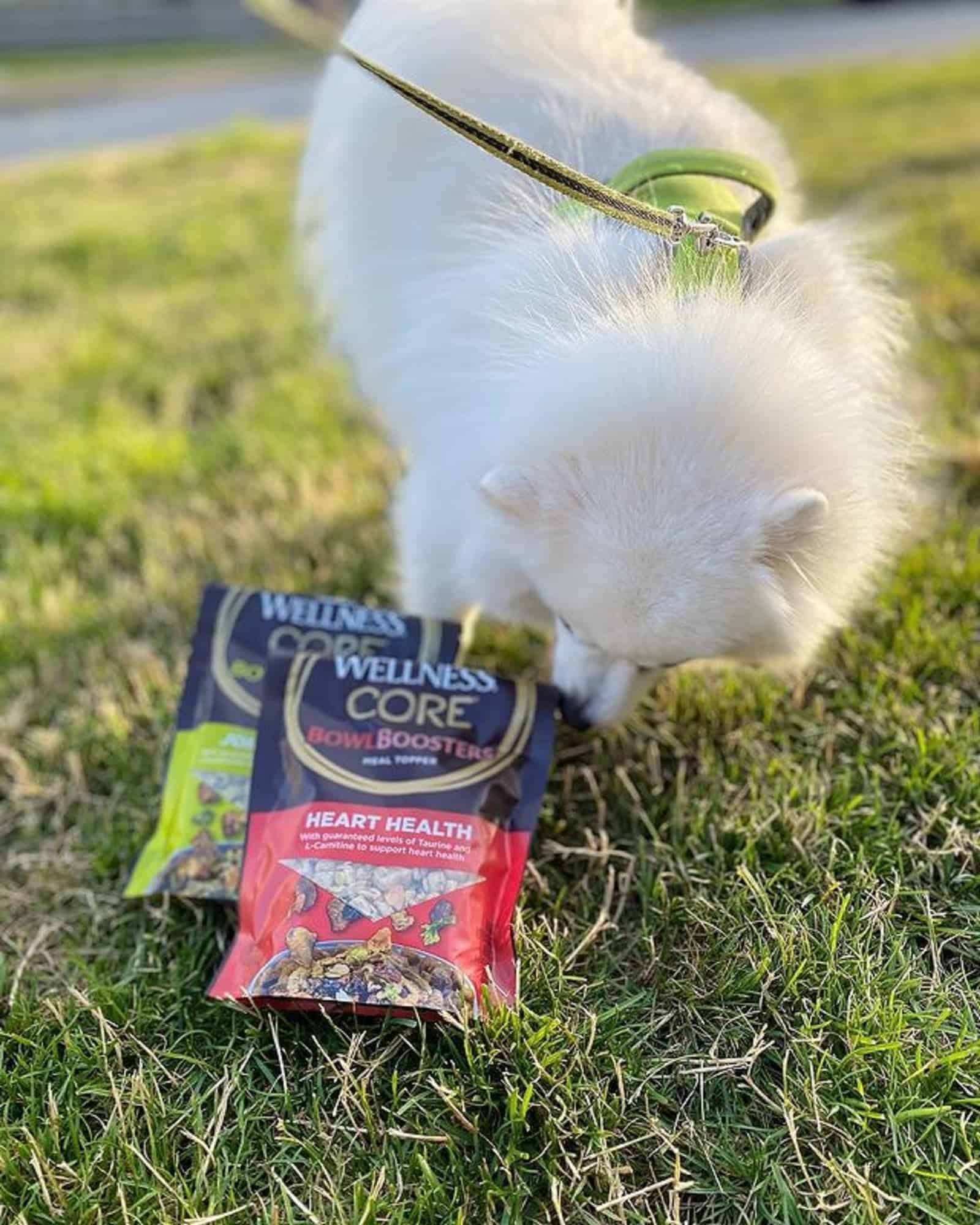
With only minor genetic issues present in the toy American Eskimo dog breed, its life expectancy is among the highest in the dog world. On average, your Eskie companion will live between twelve and fourteen years.
An important aspect of prolonging your family dog’s life is a comprehensive diet. Despite having moderately high energy levels, toy American Eskimos require balanced meals. That means that treats should be given in moderation and as part of the daily calorie limit.
It can be difficult to hold back on giving your Eskie those tasty treats, which is why our five home-cooked sweet potato recipes steal the show here.
Dog owners often consider treats as an exemption to the total amount of food the dog should eat and unknowingly overfeed their pets. Hence, obesity becomes a real possibility and danger to the pooch’s health.
Protein should be around twenty-two percent of every meal, with fatty acids and simple carbs the remainder. You should not neglect vitamins and minerals, as they are important in puppy development and adult dog body maintenance.
Kibble is the easiest in terms of storage, shelf life, and nutrient balance, but there are other options that require more preparation and financial investment, like home-cooked and raw diets. We have a guide on how much raw food a puppy should have and more, so make sure you check it out.
Toy American Eskimo Price
The breed is priced quite conservatively. Toy American Eskimo puppies of pet quality range from $800 to $1000, but show and performance quality dogs can be as expensive as $2500.
If you would like to know more about the price and are considering an Eskie purchase, consult our article on five American Eskimo breeder recommendations that surely offer healthy and happy dogs of excellent temperament.
Short History Of The Toy American Eskimo
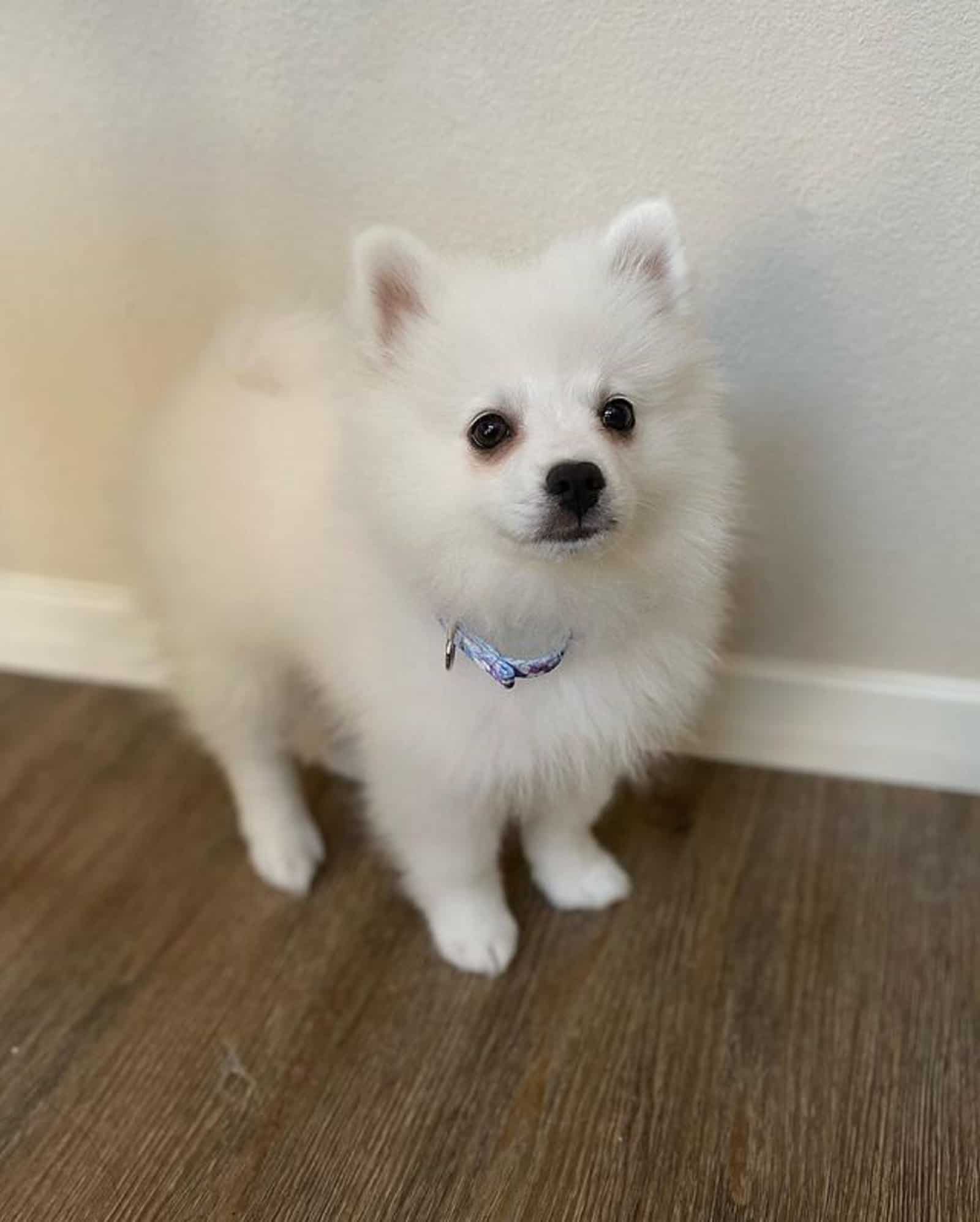
That familiar feeling that the American Eskimo dog triggers in you is because the breed has been around for centuries. Originally brought into the United States from Germany, the Eskie was known under another name — the German Spitz.
The American Eskimo’s appearance suggests it came from a much colder part of the world, and truly it does. Despite German farmers bringing it over to the States, the dog’s true home are the Nordic lands of Europe.
Eighteenth-century records of immigrants from Germany indicated that they brought their farm dogs along in search of a better life. Thriving on the agricultural life established in the Midwest, these dogs had a shortlived farm dog career on US soil.
Their appearance was beyond beauty, but their trainable character was equally desirable. When showing dogs started becoming increasingly popular, many turned their attention to competing in the show ring with the Eskie by their side.
With the emergence of other venues of entertainment in the twentieth century, American Eskimo dogs retained their place in the show business. A famous Eskie called Pierre was so well-trained and agile that he walked on a tightrope.
Unjustly, the First World War put the stigma of malice on the dog breed carrying the name of one of the Central Powers members. For that reason, the breed name was changed to American Eskimo, with official American Kennel Club recognition coming as late as 1995.
The United Kennel Club (UKC) recognized the breed back in 1913, which was much earlier than the AKC. Despite that, both clubs agreed on the standards for all three sizes of the Eskie.
To Conclude
Maybe the late recognition by the AKC caused the breed not to gain traction in terms of popularity among the public. Maybe it was the lack of breeders or the fact that it is not an easy dog to keep.
Regardless, the toy American Eskimo is on the way to becoming a top ten contender in the future years, and telling people about it is a pleasure.
If you want a balanced dog with moderate physical activity needs, then the toy American Eskimo will definitely be a good fit. You can even choose the format for an Eskie. If you prefer a bigger dog, there are the mini and standard, too.
I always end with a cautionary note: stay clear of backyard breeders and puppy mills. They are easy to spot — extremely low or high prices, no website or information online, lack of health and pedigree records, an urgency to receive a deposit, etc.
With that said, I hope you enjoyed this read, and I will see you in the next one.
